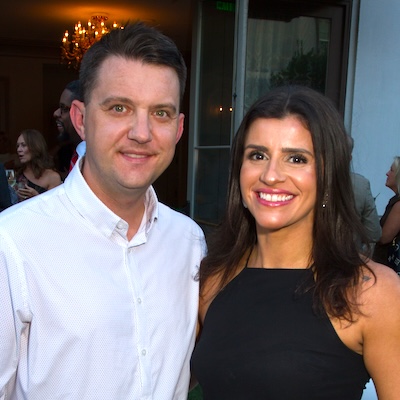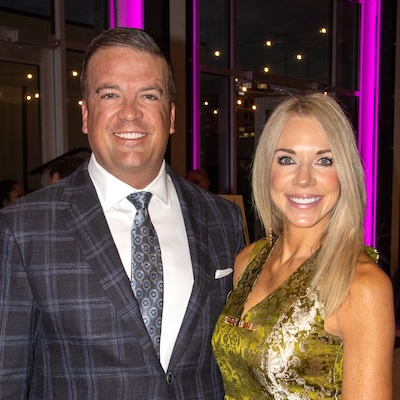Burgin Mathews is a human database full of exciting tales about fiddle-loving governors, long-lost tapes, jazz legends, zine writers, and all sorts of fun historical facts–mostly centered around music. Fortunately for fans of these things in Birmingham and around the world, Burgin has a radio show (Lost Child Radio on Birmingham Mountain Radio), books (Doc: The Story of a Birmingham Jazz Man and an upcoming extensive look at Birmingham’s jazz history), zines, and colorful pieces of visual art (often drawn on a brown paper bag). Mathews has continuously followed these passions, and channeled them into information streams for those who share similar interests. He’s now celebrating 10 years of Lost Child Radio, preparing for his second book release, returning to teaching, and continuing to draw some of the nation’s most genuine writers, poets, and lyricists. He is also one of this year’s Literary Arts Fellowship recipients from the Alabama State Council on the Arts.
“Drawing and writing were definitely a part of my childhood and adolescence–but writing especially,” Burgin shares, “By the time I was a teenager, I really wanted to write for the rest of my life in some form or fashion.” As a kid, Mathews would spend time creating his own comic books and short stories complete with illustrations. Music had always been a passion in a young Mathews’ life as well. “In 5th grade I was deeply obsessed with the Monkees,” he remembers. Next came The Beatles and Bob Dylan, then “in 10th grade I discovered Woody Guthrie, and that just kind of led me down this path.” Burgin was introduced to the world of 1960s folk revival, and a much larger world of traditional Southern and American music. By the time he graduated high school, he was deeply educated on everything from the blues to the jug bands of the early 1900s.
Burgin took this passion with him to Vassar College in New York, where he majored in American Culture. After graduating he moved to Asheville, North Carolina thanks to some slight research. “I chose well,” he states, “cause it’s a great town. A couple friends of mine and I moved down there, but we wanted to move southward and live in a place surrounded by good music.” Mathews would then move to Chapel Hill, where he earned a Masters Degree in Folklore. His life then took a zig-zag of sorts when he took up teaching, which he still does today. Throughout the whole journey, he’s been growing in ways to share his passion with the world around him.
The Montgomery-raised Mathews always took interest in his home state’s music history. “Alabama history–as you know–is not pretty, but there is a lot of beauty in the history of our state and certainly in its music,” Burgin reflects, “There is something you can take pride in as you look at the music that came out of Muscle Shoals, or the jazz that came out of Birmingham, or the country music brother duet tradition which the Louvin Brothers and the Stripling Brothers were part of. So I’ve always had an interest in that.”
“The writing, the drawing, and the radio–they all work together. The writing came first–well a love for music and a love for writing. Those two things combined,” Mathews shares. After graduating, he’d have his writings published every so often but most of his works would be reserved to his desk drawer or in his computer files. He had the stories and he had the talent “but the kinda stuff I wanted to write about, like politicians who are also old-time fiddlers, is a niche-kinda thing and there's not a lot of venues for these kinds of stories, or at least I had a hard time (finding them).” Mathews was getting tired of sending cover letters to publications just to get rejected, and finally turned to an idea that had been in front of him all along–do it yourself.
“They say that if you read enough zines, then eventually you’ll make one of your own,” Burgin says, as the DIY-nature of the concept opens it up to anybody, “It can be the lousiest, shoddiest creation–but you made it! Or it can be beautiful and profound. Some of my favorite writers I know because I read their zines, and that’s where they publish their writing.” He had dipped into the process while telling oral histories in North Carolina, and was ready to create his first work in the Magic City. “Singing Governors, Fiddling Senators, and Other Country Music Politicians: A Guide” was soon available to the people of Birmingham for $3 at Charlemagne Records and later Crestwood Coffee. Burgin finds “A Guide” hilarious because who would look for such a thing and why would it need a guide, but the book is a serious look at the long history of musicianship used in politics.
“There was this phenomenon of the fiddling Senator who would campaign with fiddle in hand, and as the saying goes fiddle his way into office. There’s a number, historically, of fiddling senators including Albert Gore, Sr. Al Gore’s father was a fiddling Senator,” Mathews shares, “Two governors of Tennessee were brothers who were fiddlers, back at the turn of the late 19th century. The most famous and most recent was (Senator) Robert Byrd from West Virginia who died a decade or more ago at close to 100, but he put out an album. There’s a bunch.” He goes on to share of former Louisiana Governor Jimmy Davis, who was the alleged writer of “You Are My Sunshine” and many other fun tales. Clearly these stories needed to be told, and now they were available to the public.
“This was not a widely disseminated piece of writing, but to hold it in my hands and to have anybody read it,” Mathews remembers, and with this route he didn’t have to worry about editors, audiences, or anything but writing. “It takes a lot of pressure off in a way, so I would write things that were really silly and sort of frivolous–cause it didn’t matter. But it allowed me to grow.” He would continue to make an annual zine, often centered around Alabama history through music or poetry, until the recent need to focus on his books postponed the tradition (he’s recently brought back zines through Lost Child’s patreon, which Burgin says has energized him tremendously).
“An actual book and a zine for me serve different but important needs,” Burgin shares. He loves both and doesn’t consider one a stepping-stone to the other, but he’d known since high school that he wanted to write a book. That’s not what Burgin was thinking about the day randomly decided to walk into the Alabama Jazz Hall of Fame on 4th Avenue North. Mathews ended up being the only person on the tour with a guide who just so happened to be Magic City music legend Frank “Doc” Adams. Doc told stories of playing with Sun Ra and Duke Ellington and even brought his instruments out as part of the history lesson. “I just fell in love with him and with the history which was clearly, as he laid it out, so significant and so–if not unknown, underknown. I was really drawn to spend more time with him, and to do more to document not just his story but that history.”
Burgin had a love for oral history and asking people to tell their stories, following the tradition of Studs Terkel and other culture preservers. He would sometimes use this hobby as a reason to interview people he found interesting–so he asked Doc if he’d be interested one year after they first crossed paths. Burgin was hoping that he could maybe create an article out of the meeting, but would soon learn that the life and personality of Frank Adams couldn’t be contained to a few thousand words.
The first Saturday the two met, they sat down in Doc’s office to record. “He said ‘I was born on Groundhog Day. February 2nd, 1928’ and then just talked for two hours straight without pausing for questions. At the end of two hours he was just about to graduate from high school in his story, and says ‘But we’re going to have to have another session next week.’” Burgin was thrilled to get to hear more of Doc’s story, and the two met the next Saturday after Adams’ taught his free class (which some of our favorite musicians like Classified Alias attended over the years). The second meeting covered Doc’s four years at Howard University, which left a lot of life to discuss still–so a third meeting was planned. By the sixth week, Burgin and Frank agreed that maybe only a book could capture the many interesting chapters in Doc’s life.
It took over 100 tapes to record Doc's stories, and by the end of it all Burgin had tales that included Sun Ra and Ellington, Harlem Renaissance great Alain LeRoy Locke, Supreme Court Justice Thurgood Marshall, and other famed nation-shapers. “These larger than life historic figures, not just from the world of music, are all over his life story,” Burgin shares–but in Doc’s stories the childhood bullies, pastors, and other “everyday” figures left the last impressions. “These people who would be lost to history, but in Doc’s stories they were just gigantic figures, and I just love that,” Mathews reflects, “Each of those characters reveals something about the universe to him.”
The two became friends over the year-and-a-half they participated in weekly meetings, and even continued to meet after their recordings were complete. The book was published in 2012, and the two remained life accomplices until Doc’s passing in 2014. “He was an inspiring human being, who certainly changed my life–regardless if we ever collaborated on the book together. He continued to play music really beautifully all of his life, but also gave up a professional career on the road or in New York or anything like that as a musician to come back to Birmingham in 1950 to teach,” Mathews shares on his good friend, “By all accounts he was a teacher who not only started lots of kids on the pathways to their lives in music but he was just an inspiring force in a lot of people’s lives, including mine.”
These conversations with Doc show Burgin that “there’s this much larger story of Birmingham’s role in jazz, and jazz’s role in Birmingham that still wasn’t known.” When Doc’s autobiography was published Burgin went right to work outlining the larger story of Birmingham’s jazz history, which will soon be available for public consumption. He jokes that he loved the experience and he’s thrilled about it, but he can’t wait to write about other topics after this recent decade-plus undertaking. However, he has certainly enjoyed the journey. “It has become such a part of my life by chance. By the fact that Doc happened to be there the day I happened to walk into the Hall of Fame.”
Radio is another way that Burgin pays tribute to music legends, something he first picked up as a college radio show host. “I love the possibility of radio. Radios are very cool, in concept,” Mathews shares, “I really feel very privileged to have this space to literally do whatever I want to do, because that’s extremely rare in radio today.” The show's name comes from “an old Alabama fiddle tune recording in Birmingham in 1928” by the aforementioned Spripling brothers. Mathews says if he knew the show would last a decade he may have found something more descriptive, but the title The Lost Child “taps into the whole sense of history and place that I hope are at the heart of the show, even though it’s not always Alabama-centric.” We think it’s a pretty perfect fit.
The show has the official tagline of “down-home roots radio hour” but that only begins to describe the beautiful variety of sounds that can be heard on this unique weekly program. “I wanted a show where you could play these various kinds of traditional or grassroots or sort-of historically-rooted music back-to-back-to-back. So I could play some 1960s soul next to some 1930s jazz next to some field recordings next to some gospel, some classic country, Hank Williams, etcetera,” Burgin shares, going on to say there are excellent radio programs found in the world that are devoted to classic country or blues or gospel–but few if any blend these in the way The Lost Child does.

“By putting a blues song next to a country song next to rockabilly next to swing, etcetera it might invite listeners to draw their own connections and hear all of those different strains of influence as kind of part of the same thing. So that a Bill Monroe song–a bluegrass song–next to Ike and Tina Turner or something like that isn’t something that you typically find but what holds it all together is really my own personal music taste,” he laughs, then reflects, “Certainly music, in large part, that comes out of the American South."
Burgin’s drawings of famous folk, soul, and other musicians have become widely associated with his show, but Burgin had abandoned the practice for nearly a decade. “By the time I graduated from college, I’d really kinda stopped drawing. I’d never considered myself an artist, I just liked drawing pictures,” Burgin shares, “I guess as I got a little older I got this destructive notion that you have to specialize in something. If you’re not an ‘Artist’ with a capital A, and that’s not your identity or your job or whatever then you don’t make art. It was the dumbest thing in the world.” One night while listening to music and drinking some beer, Burgin randomly began drawing one of his writing-influences Gertrude Stein and surrounded it with random quotes (“her language embraces a certain randomness”) and was surprised it turned out looking kinda like her. He then drew her partner, Alice B. Toklas, and the couple’s poodle–also surrounded by various texts. “Then I got on this kick so I would amuse myself by just drawing pictures of writers I admired. That, in my early 30s, reconnected me to this thing that I hadn’t done in a decade but that used to mean a lot to me. And it was just fun–and that’s still what it is.”
This return to drawing happened right before Burgin’s return to radio, and he soon found himself drawing a picture of Woody Guthrie to celebrate the 100th anniversary of the folk legend’s birth and posted it online. People loved it. He next drew Hank Williams, and once again the internet was enthralled by Mathews’ visual odes to those who inspired him. He continues to draw his favorite musicians today, mostly for fun, but was able to display his art at the last event of the beloved The Jaybird (which he co-founded with his wife Glory McLaughlin, Lloyd Bricken, and Lillis Taylor) and has been invited to display at Lowe Mill in Huntsville. “That’s exciting,” he shares, “That’s not why I do it or what I ever expected, but once I started putting them on social media it’s been kinda neat to get feedback.”
Burgin has a firm belief that everybody should sing, write, draw, or do whatever creative process makes them happy–even if they choose not to share it with others. As an English teacher in high school, he still encourages his kids to draw–even those who claim they can’t. “A lot of stick figures have great souls to them,” Burgin comments. His belief extends to pictures he takes and collects, such as random people playing instruments and of course–boiled peanut signs that are seen all throughout the South. “What I love about a good boiled peanut sign is the color and the creativity. They are usually in these bright oranges or bright reds or something,” he shares, “Probably whoever painted that sign is not a professional artist, but it’s art in everyday life in the most wonderful way.”
This concept that anyone can be an artist is part of Burgin’s core beliefs, and he brings it to his radio show and writings. “That’s part of the ethos of the music I play,” Mathews shares, “a lot of the music I play is music by ordinary people making music. That’s why I like a field recording or something like that. I’ll play a mother singing a lullaby, that kind of thing–next to a pop song.” The impact a whistled tune makes on us in our daily lives is just as important as the biggest song in the world to this Birmingham writer, and we all get to hear these captured moments in time.
From his deep dives into Alabama figures like Big Jim Folsum, to his unique drawings paying tribute to music legends–Burgin Mathews is both documenting Alabama history and creating new moments to record. Something truly inspiring and uplifting to the city around us. He’s excited to see two important Birmingham jazz institutes–the Hall of Fame and the historic Masonic Temple (where Cab Calloway, Duke, and more used to play)–be brought back to life. Soon his latest book will give us the details on the historic ground we walk, but for now we can enjoy reading “Doc” while listening to The Lost Child.
Thank you for all you do, Burgin. It’s so very appreciated by this writer and many more.










